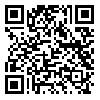Volume 10, Issue 1 (2025)
IJMPP 2025, 10(1): 1149-1158 |
Back to browse issues page
Download citation:
BibTeX | RIS | EndNote | Medlars | ProCite | Reference Manager | RefWorks
Send citation to:



BibTeX | RIS | EndNote | Medlars | ProCite | Reference Manager | RefWorks
Send citation to:
Naqshbandi A, Ahmadi O. Determining the Cause-effect Relationship between Risk Factors affecting Work-related Musculoskeletal Disorders (WMSDs) using the Fuzzy DEMATEL Method. IJMPP 2025; 10 (1) :1149-1158
URL: http://ijmpp.modares.ac.ir/article-32-79240-en.html
URL: http://ijmpp.modares.ac.ir/article-32-79240-en.html
1- Master's student/Occupational Health and Safety Engineering/Faculty of Medical Sciences/Tharbiat Modares University/Tehran, Iran
2- Assistant Professor/ Occupational Health and Safety Engineering/ Faculty of Medical Sciences/ Tarbiat Modares University/ Tehran, Iran ,o.ahmadi@modares.ac.ir
2- Assistant Professor/ Occupational Health and Safety Engineering/ Faculty of Medical Sciences/ Tarbiat Modares University/ Tehran, Iran ,
Abstract: (312 Views)
Aim: One of the major global occupational diseases and injuries is musculoskeletal disorders, which leads to increased costs and reduced working productivity. It is essential to assess the risk factors that influence development of these diseases. The purpose of this study was to determine the relationship between risk factors affecting work-related musculoskeletal disorders (WMSDs) in the food industry using the Fuzzy DEMATEL method.
Methods: In this study, 46 occupational risk factors related to musculoskeletal disorders in the food sector were selected from related articles and classified according to the 4m method. Fuzzy DEMATEL study is designed and delivered to experts. Finally, these risk factors were evaluated using the Fuzzy DEMATEL method.
Findings: The cause- effect relationship between 46 risk factors was determined using the Fuzzy DEMATEL method. According to results, the age factor (D-R=2.26) has a greater influence compared to other identified risk factors (is the most causal) and the job satisfaction factor compared to other identified risk factors, is the most influential factor (D-R=-2.26). According to the results, the most important risk factor is the duration of work (D+R=7.46) and the least important is related to the genetic risk factor (D+R=2.64).
Conclusion: The DEMATEL method allows us to better plan and solve problems. In this way, in order to better understand cause-effect relationships, we can divide several criteria into cause-effect groups to build a correlation map.
Methods: In this study, 46 occupational risk factors related to musculoskeletal disorders in the food sector were selected from related articles and classified according to the 4m method. Fuzzy DEMATEL study is designed and delivered to experts. Finally, these risk factors were evaluated using the Fuzzy DEMATEL method.
Findings: The cause- effect relationship between 46 risk factors was determined using the Fuzzy DEMATEL method. According to results, the age factor (D-R=2.26) has a greater influence compared to other identified risk factors (is the most causal) and the job satisfaction factor compared to other identified risk factors, is the most influential factor (D-R=-2.26). According to the results, the most important risk factor is the duration of work (D+R=7.46) and the least important is related to the genetic risk factor (D+R=2.64).
Conclusion: The DEMATEL method allows us to better plan and solve problems. In this way, in order to better understand cause-effect relationships, we can divide several criteria into cause-effect groups to build a correlation map.
Article Type: Original Research |
Subject:
Sport Sciences, Therapy and Medicine
Received: 2025/01/29 | Revised: 2025/05/6 | Accepted: 2025/03/4 | Published: 2025/02/28
Received: 2025/01/29 | Revised: 2025/05/6 | Accepted: 2025/03/4 | Published: 2025/02/28
Send email to the article author
| Rights and permissions | |
 |
This work is licensed under a Creative Commons Attribution-NonCommercial 4.0 International License. |







